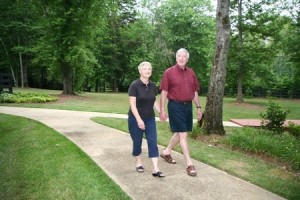 In 2013, persons 65 years or older comprised 14.1% of the U.S. population. It is projected that by 2040, this age group will grow to 21.7% of the population. It is no secret that the U.S. is aging, some states faster than others.
In 2013, persons 65 years or older comprised 14.1% of the U.S. population. It is projected that by 2040, this age group will grow to 21.7% of the population. It is no secret that the U.S. is aging, some states faster than others.
There’s a higher demand for senior living communities than ever before. Not all such communities are built the same though. Some can represent ultimate luxury while others focus more on the basics.
Despite the price gap, most senior living communities have similarities that are designed to make the lives of seniors easier. Here are the 3 common similarities these communities have:
1. Slip-Resistant Floors
It’s startling that one out of three older people fall every year. Falling once increases the chances of falling again by twofold.
Falls can be costly. They can cause head injury or broken bones. The CDC estimates that more than 95% of hip fractures are due to falling, usually sideways.
Falls also have mental and emotional side effects that aren’t discussed often. People who fall once are afraid of falling again. They’ll try to cut down on activities, which can cause them to be weaker and increase the chances of falling again. It’s a vicious cycle.
Senior living communities are well aware of the statistics related to falling, so many install slip-resistant flooring. A resilient floor surface prevents falling even when wet. Although no flooring is 100% slip-proof, with skid-free floor mats and rugs, the chances of falling can be greatly reduced.
2. Doors That Are Easy on Hands
Millions of seniors suffer from arthritis. What used to come easily, like opening bottles or turning doorknobs, becomes arduous and painful. Senior living door latches require a special consideration.
There are some ADA Compliant arthritis friendly door latches in the market. UltraLatch by SOSS is one of them. With lever-style doorknobs like UltraLatch, no senior with arthritis has to think twice about whether it’s worth the pain to open the door.
3. Walk-In Showers
According to the National Institute of Aging, 80% of seniors who fall do so in their bathroom. Due to the slippery nature of the bathroom, this is not very surprising.
Walk-in showers with low entry can help mitigate this problem. Many senior communities have walk-in showers, also known as step-in showers, instead of traditional tubs.
They also have grab bars, flexible shower wand, and other features friendly for seniors. Because falls can happen as a result of poor eyesight, bright but indirect lighting in the bathroom can also help.
While senior living communities differ from one another, most of them are designed to maximize the comfort and safety of their residents. The similarities above are common and rightfully expected in any decent senior home.